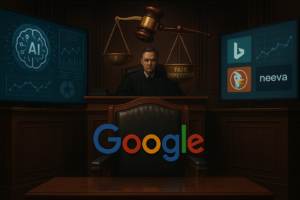Navigating the AI Job Landscape: Opportunities and Challenges Ahead
The rapid advancement of artificial intelligence (AI) is reshaping industries at an unprecedented pace, creating a complex landscape for employment across the globe. While AI holds the promise of boosting productivity and driving innovation, it simultaneously raises concerns about job displacement and the widening digital divide. As countries grapple with these changes, understanding the nuanced implications of AI on the job market becomes increasingly vital.
Impact of AI on Employment
One of the most significant impacts of AI is its ability to automate tasks traditionally performed by humans. Routine jobs in sectors like manufacturing, retail, and even professional services are increasingly being handled by AI systems. This shift is not merely a future prospect; it is happening now. Reports indicate that millions of jobs could be at risk as automation technologies become more sophisticated. For instance, roles like:
- Data entry
- Basic customer service
- Some aspects of financial analysis
are being replaced by AI, leading to fears of widespread unemployment.
Opportunities Created by AI
However, it is essential to recognize that the advent of AI does not solely spell doom for the workforce. The technology is also a catalyst for job creation, introducing new roles that did not exist before. As organizations adopt AI, they require skilled professionals to:
- Develop
- Manage
- Maintain
these systems. Fields such as AI ethics, data science, and machine learning engineering are experiencing a surge in demand. This shift necessitates a reevaluation of educational and training programs to prepare the workforce for a future where AI is central.
Enhancing Job Quality
Moreover, the integration of AI can enhance job quality by allowing workers to focus on more complex and creative tasks, leaving repetitive or mundane activities to machines. For instance, healthcare professionals can leverage AI-driven diagnostics, enabling them to spend more time with patients and less on administrative duties. This synergy can lead to increased job satisfaction and improved outcomes across various industries.
Challenges in the AI-Driven Economy
Despite these opportunities, the transition to an AI-driven economy is fraught with challenges. The digital divide—both within societies and between them—continues to widen. Countries with limited access to technology and education are at risk of falling behind, exacerbating existing inequalities. Nations like Pakistan, for example, must actively engage with these developments to ensure they do not miss out on the benefits of AI while also addressing the potential pitfalls.
Collaboration for a Balanced Approach
To navigate this evolving landscape, collaboration between governments, educational institutions, and private sectors is crucial. Policies that support retraining and upskilling initiatives can help workers transition to new roles created by AI advancements. Furthermore, ethical considerations regarding AI deployment must be prioritized to ensure that technology serves the greater good rather than exacerbating societal inequalities.
As we stand on the brink of a new era, it is imperative to approach AI with a balanced perspective, recognizing its potential to enhance lives while proactively addressing the challenges it poses to the workforce. The future of work may be uncertain, but with the right strategies, we can harness the power of AI to create a more equitable and prosperous society.


